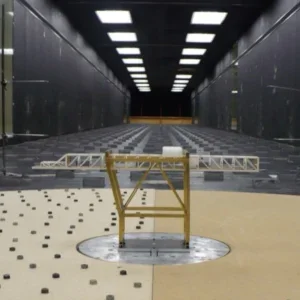The most fundamental responsibility of an employer is to provide a safe workplace, and regulatory bodies around the world are increasing the requirement for employers to be able to show how this is achieved. When selecting safety-related equipment, such as remote controls for lifting machines, the criteria and processes used for making that decision should be demonstrable.
What standards should a radio control meet?
Depending on the jurisdiction, regulations relevant to radio controls fall under several categories:
– Radio emissions and immunity: These requirements address the risk of interference of the device with other radio devices, and the health risks associated with electromagnetic radiation. For example, The R&TTE directive and its harmonised standards (EN300220, EN61000, EN 301489), FCC part 15/90, AS4268.
– Functional safety: These requirements are the most complex, and address the risk that the device may malfunction causing dangerous machine behaviour. For example, EN 954-1 (ISO 13849-1), IEC 62061, AS4024.
– Requirements specific to the lifting machine: These standards may impose special requirements on the system in a wide variety of ways, including safety performance, physical parameters, labelling, etc. For example, IEC EN 60204-1/32, EN 13557, AS1418.
– Electrical safety: These requirements aim to control the risk of electrical shock and fire, and are common to a wide range of electrical equipment. For example, the Low Voltage Directive (EU) or AS/NZS 3000 (Australia and New Zealand).
These regulations can be complicated, and can interact with each other. It is also important to recognise that they also call for minimum requirements. Simply meeting these requirements may not be enough to satisfy the over-riding requirement that a radio control is ‘safe’ – for example, that it reduces risk to a tolerable level.
How do you tell if a radio control is suitable?
Appearance is a very poor guide to the safety of a remote control, as some types that are fundamentally flawed look very similar to other controllers. There are, however, two things that can be examined with the naked eye:
– Is the stop button a mechanically latching type? As with all stop buttons, those on radio controls should use positive-breaking normally-closed contacts. Once activated, the stop button should need to be manually reset before the controller can be used again. If the stop button on a controller appears to be a standard pushbutton, then additional enquires are warranted.
– Does the controller use rechargeable batteries? Most ‘safe’ remote controls use rechargeable batteries for a simple reason – they are transmitting constantly once turned on, even if no command is active. This is necessary so that the controller fails safe in the event that communication between the transmitter and receiver is lost. Some controllers that use standard, non-rechargeable batteries can do so because they only transmit when a command is being given. While this results in a much lower power consumption and longer battery life, it drastically reduces safety.
Beyond these simple observations, purchasers should first look for compliance with the mandatory standards. The protection of the controller against faults should also be determined, normally considering both the stop function and the motion controls separately. While manufacturers’ self-assessments of the safety performance are useful, independent assessments from qualified laboratories (for example, notified bodies competent in functional safety) are clearly more valuable.
But the best defence that a purchaser can have against selecting an inappropriate radio control is to build up some knowledge of the technology so that the choice is not based on price, appearance, or manufacturers’ unsupported claims, but on sound principles.
Is reliability the same as safety?
Many ‘unsafe’ radio controls find their way onto lifting machines because purchasers are unaware of the requirements, or lack the knowledge to apply them correctly. In some cases, the lack of attention by the manufacturer of the controller to safety issues is reflected in the overall build quality, and the user becomes aware of the poor performance. But in other cases, the user may be quite satisfied with the day-to-day use of an unsafe radio control. This is not surprising, because performance under fault conditions is a very different thing to basic functionality.
As with most safety issues, inattention to the safety needs can go unpunished for much of the time – the shortcomings are only exposed when something goes wrong, sometimes with tragic consequences.
Additional articles in this series will focus on assessing the risks associated with radio controls for lifting machines, and on the techniques used to achieve safety.
Autec’s MJ joystick Autec joystick






